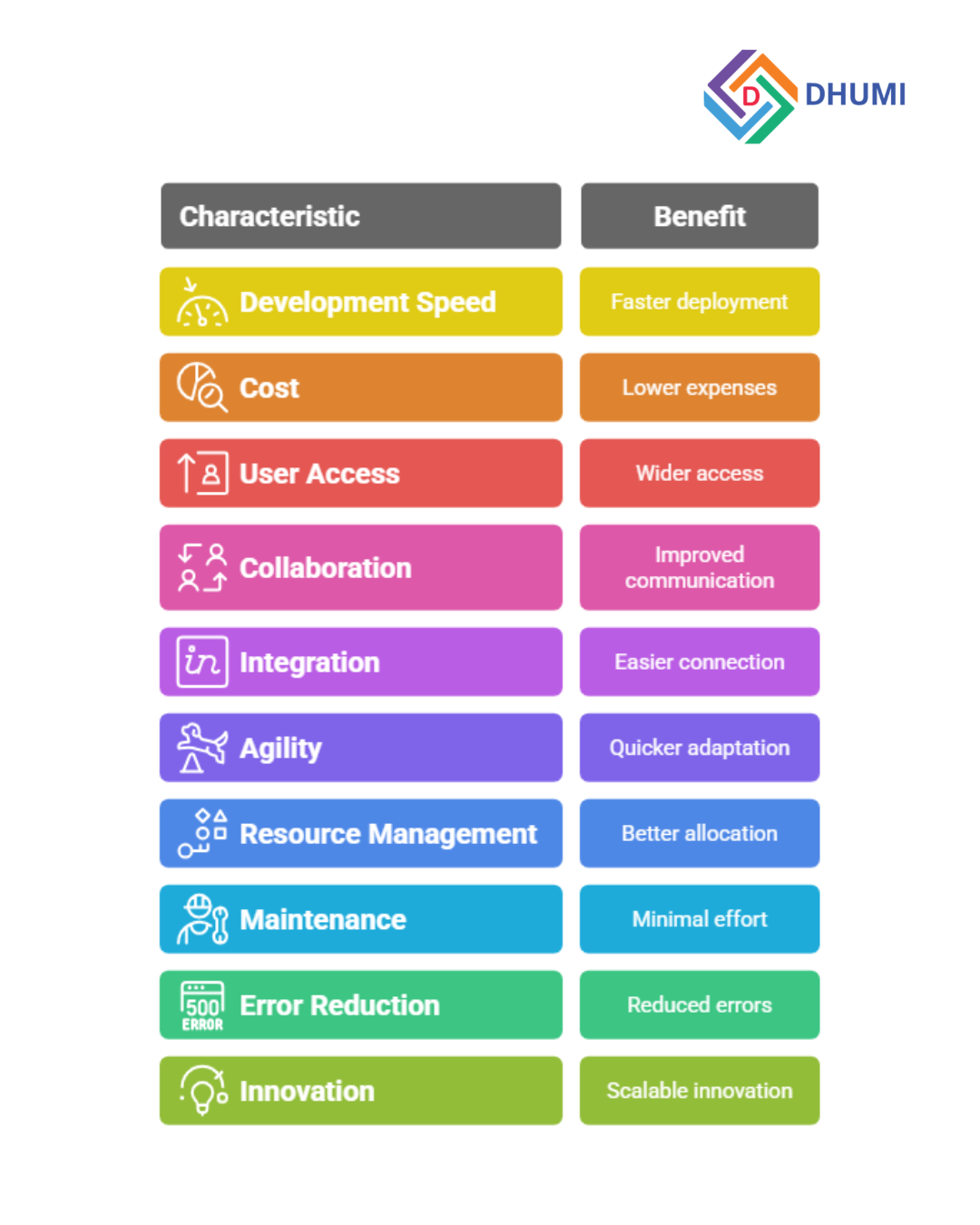In today’s digital-first world, businesses must develop applications quickly to stay competitive. Traditional software development (known as pro-code) is no longer the only route. Newer approaches like low-code and no-code platforms are changing the game by making app development faster, easier, and accessible to a wider range of users.
In this 2025 guide, we’ll explore the meaning of low-code, no-code, and pro-code development, their key differences, how these platforms work, and why choosing the right method is critical for your business growth.
What is Low-Code Development?
Low-code development is a modern approach that minimizes manual coding by using visual tools and pre-built components. Developers create applications by dragging and dropping elements, configuring workflows, and integrating APIs, rather than writing extensive lines of code from scratch.
Key features of low-code development:
- Visual user interfaces with drag-and-drop options
- Integration with databases and external APIs
- Pre-built templates and components
- Scalability for complex projects
- Requires some technical knowledge for advanced customization
What is No-Code Development?
No-code development takes simplicity even further by enabling non-technical users to create applications entirely through visual tools, without writing any code. No-code is perfect for small businesses, startups, and departments needing quick internal tools without relying on IT teams.
Key features of no-code development:
- 100% visual application design
- Pre-built workflows and templates
- Minimal to no technical expertise required
- Ideal for simple apps like internal dashboards or customer forms
What is Pro-Code Development?
Pro-code development refers to the traditional, fully manual coding approach handled by professional developers. It allows for maximum flexibility, customization, and control over the software being built.
Key features of pro-code development:
- Full control over the codebase
- Ability to build highly customized and complex solutions
- Suitable for large-scale and enterprise-level applications
- Requires skilled and experienced developers
- Offers unlimited integration, security, and scalability options
Learn More about Task Management Software
Low-Code vs No-Code: Key Differences
Although often mentioned together, low-code and no-code serve different audiences and project types. Here’s how they differ:
- Target Users:
- Low-code platforms are designed for professional developers and tech-savvy users who can handle some coding when necessary.
- No-code platforms are built for non-developers, allowing business users to build apps without writing any code.
- Low-code platforms are designed for professional developers and tech-savvy users who can handle some coding when necessary.
- Customization:
- Low-code provides more flexibility and allows coding for complex functionalities.
- No-code is limited to the features provided by the platform and has minimal customization options.
- Low-code provides more flexibility and allows coding for complex functionalities.
- Learning Curve:
- Low-code requires some understanding of programming concepts.
- No-code platforms are user-friendly and require almost no technical skills.
- Low-code requires some understanding of programming concepts.
- Use Cases:
- Low-code is suitable for more complex apps that may need database integration, API connections, and custom logic.
- No-code is ideal for simple apps like internal portals, form submissions, and websites.
- Low-code is suitable for more complex apps that may need database integration, API connections, and custom logic.
- Scalability:
- Low-code applications can scale more easily for large user bases and growing business needs.
- No-code apps might struggle with scalability and complex workflows over time.
- Low-code applications can scale more easily for large user bases and growing business needs.
Pro-Code vs Low-Code/No-Code: Key Differences
When comparing pro-code with low-code and no-code, the major differences become clear in terms of speed, control, cost, and skills required.
- Development Speed:
- Pro-code development is slow because it involves writing, testing, and debugging custom code manually.
- Low-code and no-code significantly accelerate app development by using pre-built modules and automation.
- Pro-code development is slow because it involves writing, testing, and debugging custom code manually.
- Customization and Flexibility:
- Pro-code offers unlimited customization to meet any business or technical requirement.
- Low-code offers considerable flexibility but may still have some platform limitations.
- No-code has limited customization based on available templates and integrations.
- Pro-code offers unlimited customization to meet any business or technical requirement.
- Skill Requirements:
- Pro-code demands professional developers with expertise in various programming languages and frameworks.
- Low-code requires moderate technical knowledge.
- No-code needs little to no technical skill.
- Pro-code demands professional developers with expertise in various programming languages and frameworks.
- Best Fit:
- Pro-code is ideal for complex, enterprise-grade solutions where security, performance, and unique features are critical.
- Low-code suits mid-sized applications needing fast delivery with moderate customization.
- No-code works best for internal apps, MVPs, and small business solutions.
- Pro-code is ideal for complex, enterprise-grade solutions where security, performance, and unique features are critical.
- Cost Implications:
- Pro-code projects are typically expensive due to developer salaries and longer timelines.
- Low-code and no-code solutions are more budget-friendly, especially for startups and small businesses.
- Pro-code projects are typically expensive due to developer salaries and longer timelines.
How Do Low-Code and No-Code Platforms Work?
- Visual Modeling:
Users design applications using simple drag-and-drop interfaces, drawing workflows, and setting rules without writing extensive code. - Pre-Built Components:
Platforms offer reusable elements like forms, buttons, database connectors, and API integrations, allowing users to assemble applications quickly. - Automation of Backend Processes:
Server setups, database management, user authentication, and other backend activities are automated, reducing manual effort. - Seamless Integrations:
Many platforms easily integrate with popular third-party services like Salesforce, Slack, AWS, Google Sheets, and more. - One-Click Deployment:
Once the app is built, platforms allow for instant deployment across web, mobile, or cloud environments without manual infrastructure management.
Top 10 Benefits of Using Low-Code and No-Code Development Platforms

1. Rapid Application Development:
Applications can be designed, built, and deployed much faster compared to traditional methods.
2. Lower Costs:
Businesses save money by needing fewer developers and spending less time on development cycles.
3. Empowerment of Non-Developers:
Business teams can create their own tools without relying heavily on IT departments.
4. Improved Collaboration:
Visual platforms bridge the gap between developers and business users, making requirements clearer and reducing miscommunication.
5. Easy Integration:
Out-of-the-box connectors make it easy to integrate with databases, SaaS platforms, and third-party APIs.
6. Greater Agility:
Companies can adapt quickly to market changes, customer needs, and internal process improvements.
7. Better Resource Management:
IT teams can focus on more critical, high-priority projects while empowering other teams to build basic apps.
8. Minimal Maintenance Effort:
Low-code and no-code apps require less maintenance due to automated updates and pre-built modules.
9. Reduced Risk of Errors:
Visual development reduces manual coding errors, ensuring more stable and reliable applications.
10. Innovation at Scale:
Businesses can prototype new ideas faster and deploy MVPs to the market for real-world testing without heavy investments.
Conclusion
As 2025 unfolds, the demand for faster, smarter, and more efficient development methods continues to rise.
Low-code and no-code platforms offer incredible speed, cost efficiency, and flexibility, allowing companies to build and deploy applications in days instead of months. Meanwhile, pro-code remains vital for complex, large-scale projects demanding ultimate control and customization.
Choosing between pro-code, low-code, and no-code depends on your project requirements, resources, and long-term business goals. For many businesses, strategically combining these approaches—using low-code for speed, no-code for simplicity, and pro-code for complexity—will be the key to thriving in an increasingly digital world.




Solid article! Responsible gaming is key, and seeing platforms like PH799 PH prioritize compliance with PAGCOR is reassuring. Curious about their KYC process – security matters! Check out the ph799 ph app download for a regulated experience.